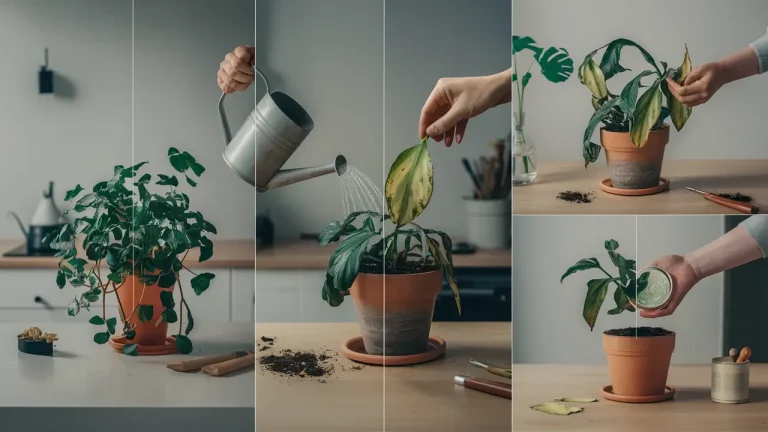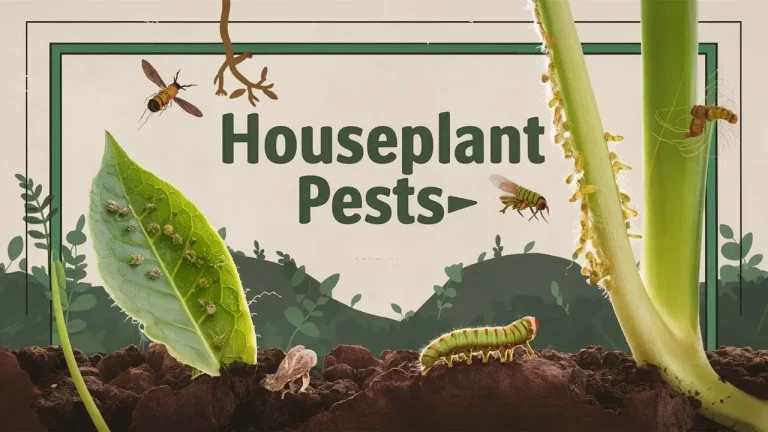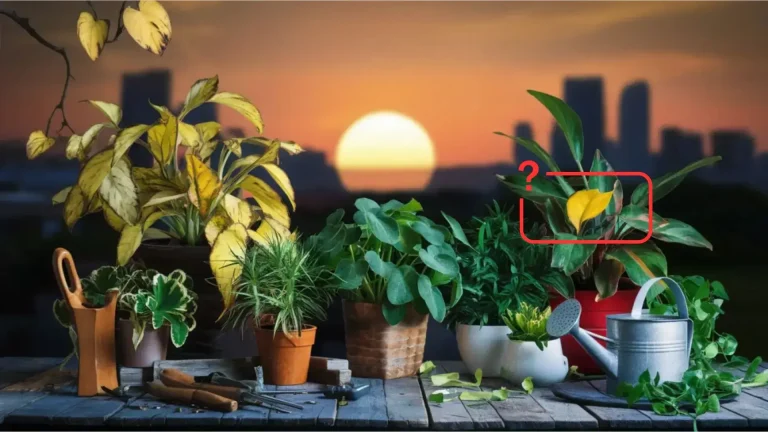Root Rot in Houseplants: How to Spot, Treat, and Prevent It
Root rot in houseplants is one of the most dreaded problems for plant owners. It often hides beneath the soil, going unnoticed until the damage becomes severe. By the time your plant’s leaves start to wilt or turn yellow, the roots may already be in trouble.
Root rot occurs when the roots of a plant are exposed to excess water and poor drainage. This creates the perfect environment for decay, often caused by fungal infections. As the roots break down, the plant struggles to absorb the water and nutrients it needs to survive, leading to a visible decline in health.
The good news? Root rot is both preventable and treatable. This guide will walk you through identifying root rot, understanding its causes, and taking simple, actionable steps to save your plant and avoid future problems.
Table of Contents
What is Root Rot?
Root rot is a common condition in houseplants where the roots begin to decay. The two primary culprits are:
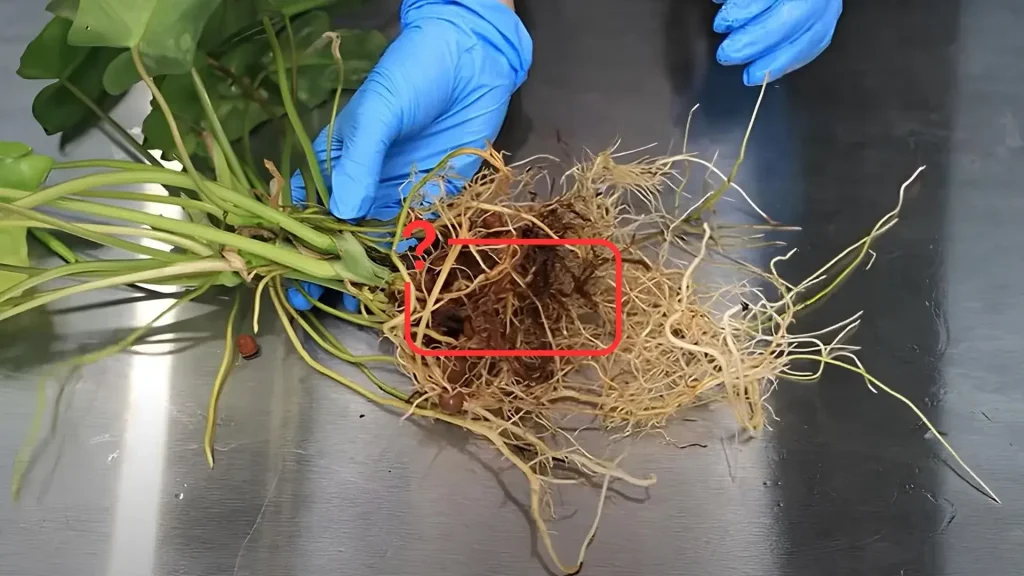
- Overwatering: Consistently wet soil deprives roots of oxygen, causing them to suffocate and break down.
- Fungal Infections: Damp conditions promote the growth of harmful fungi that attack the roots.
Why It’s a Problem
Root rot doesn’t just harm the roots—it jeopardizes the entire plant. Here’s why:
- Damaged Roots Can’t Absorb Water or Nutrients: Without healthy roots, the plant can’t support its basic functions, leading to wilting, yellowing leaves, and stunted growth.
- If Left Untreated, Root Rot Can Kill the Plant: Once too much of the root system is affected, it becomes difficult for the plant to recover, even with intervention.
Identifying root rot early and taking swift action is the key to saving your plant and preventing further damage.
Causes of Root Rot in Houseplants
Understanding what leads to root rot is essential for both prevention and treatment. Here are the main causes:
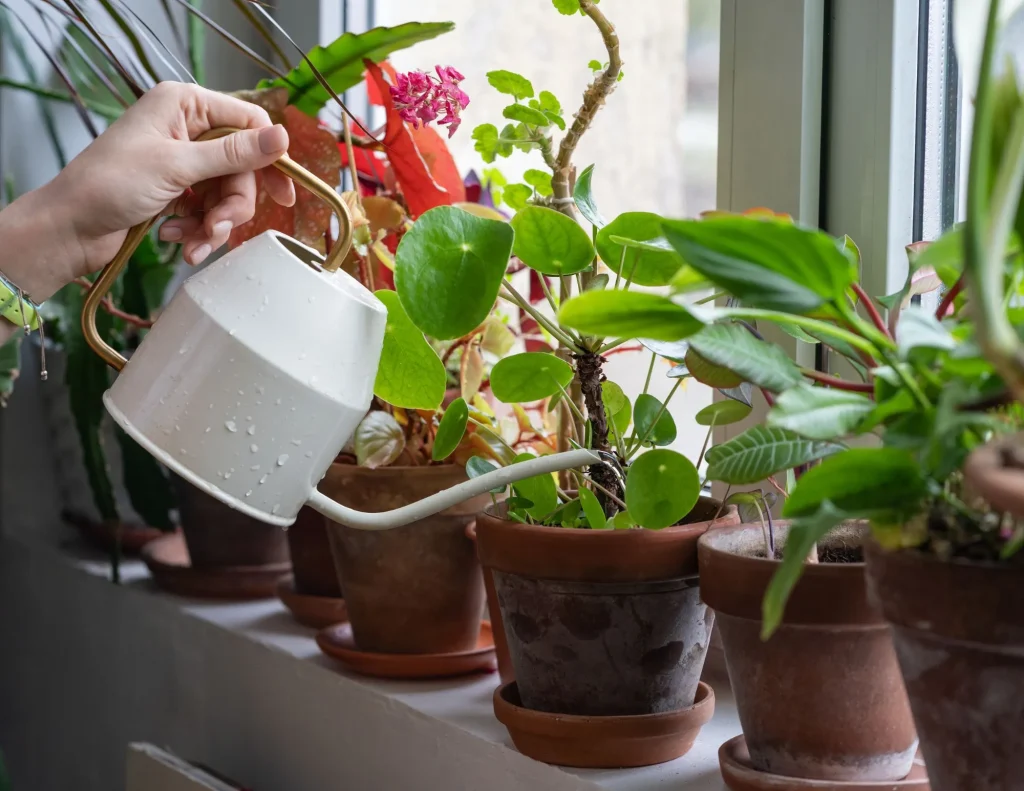
1. Overwatering
- When plants are watered too frequently, the soil becomes waterlogged, leaving no room for oxygen to reach the roots. Without oxygen, the roots suffocate, weaken, and begin to decay.
2. Poor Drainage
- Using pots without drainage holes traps excess water at the bottom, even if you’re careful about how much you water. Similarly, soil that retains too much moisture can contribute to a soggy environment that roots can’t tolerate.
3. Incorrect Pot Size
- Oversized pots hold more soil, which stays wet for longer periods. This extended moisture retention increases the likelihood of root rot.
4. Fungal Infections
- Overwatering and damp soil create the perfect conditions for fungi like Pythium and Phytophthora. These fungi attack the roots, accelerating their decay.
By understanding these causes, you can adjust your plant care routine to minimize the risk of root rot.
Signs of Root Rot
Catching root rot early can make all the difference in saving your plant. Watch for these warning signs:
Above the Soil
- Wilting Leaves: The plant may droop even though the soil feels moist.
- Yellowing or Browning Leaves: A lack of nutrients reaching the leaves causes discoloration.
- Stunted Growth: Root damage limits the plant’s ability to grow new foliage or flowers.
Below the Soil
- Mushy, Dark, or Slimy Roots: Healthy roots are firm and white or light brown. Rotting roots, on the other hand, appear soft, dark, and slimy to the touch.
- Foul Odor from the Soil: A sour or musty smell is a strong indicator of root rot.
If you notice these symptoms, it’s time to take immediate action to save your plant.
How to Fix Root Rot
If your plant shows signs of root rot, don’t despair—it’s often treatable with the right steps.
1. Remove the Plant from Its Pot
- Gently lift the plant out of its pot to inspect the roots. Be careful not to damage healthy roots during this process.
2. Trim Affected Roots
- Use clean, sharp scissors or pruning shears to cut away all mushy, blackened, or slimy roots.
- Disinfect your tools after use to avoid spreading fungi.
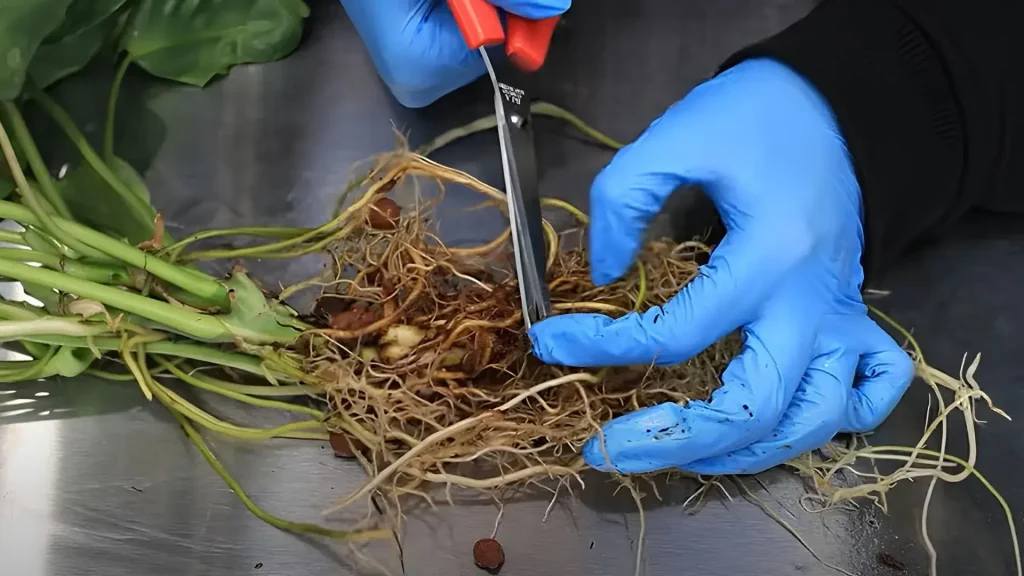
3. Wash and Treat the Roots
- Rinse the remaining healthy roots under lukewarm water to remove any lingering soil and pathogens.
- You can use a solution of hydrogen peroxide (3%) mixed with water (1:1 ratio) for a quick disinfection.
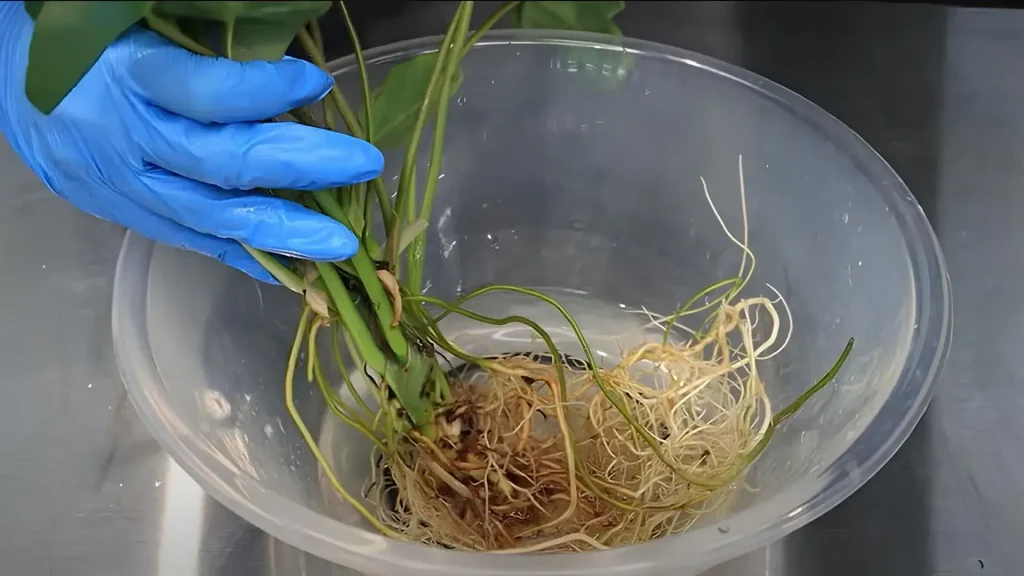
4. Repot the Plant
- Use fresh, well-draining soil tailored to your plant’s needs (e.g., a cactus mix for succulents) when you repot your houseplants.
- Choose a pot with proper drainage holes to allow excess water to escape.
6. Adjust Watering Practices
- Water only when the top 1-2 inches of soil feel dry.
- Avoid watering on a strict schedule—let the plant’s needs guide you.
7. Avoid Fertilizing
- Do not fertilize your plant immediately after repotting; this encourages root growth rather than foliage growth during recovery.
Preventing Root Rot
Prevention is the best cure when it comes to root rot. Here’s how to keep your plants safe:
1. Choose the Right Pot and Soil
- Always use pots with drainage holes to prevent water from pooling.
- Select well-draining soil mixes suitable for your plant type.
2. Monitor Watering Habits
- Check the soil moisture before watering by using your finger or a moisture meter.
- Avoid overwatering, especially during the plant’s dormant season.
3. Use Proper Pot Sizes
- Match the pot size to your plant’s root system. A pot that’s too large can retain excess moisture, increasing the risk of rot.
4. Provide Adequate Light and Airflow
- Proper lighting helps the soil dry out at an appropriate rate.
- Ensure good airflow around your plants to prevent damp conditions.
Organize your plant care effortlessly with our Printable Planner!
Final Thoughts
Root rot might sound like a death sentence for your houseplants, but with quick action and proper care, many plants can recover and thrive. By understanding the causes and keeping an eye out for early warning signs, you can prevent root rot from taking hold in the first place.
Your Next Step: Inspect your plants today for any signs of trouble, adjust your watering routine, and make sure their pots and soil are optimized for healthy roots. Have questions or success stories about treating root rot? Share them in the comments—we’d love to hear from you!


